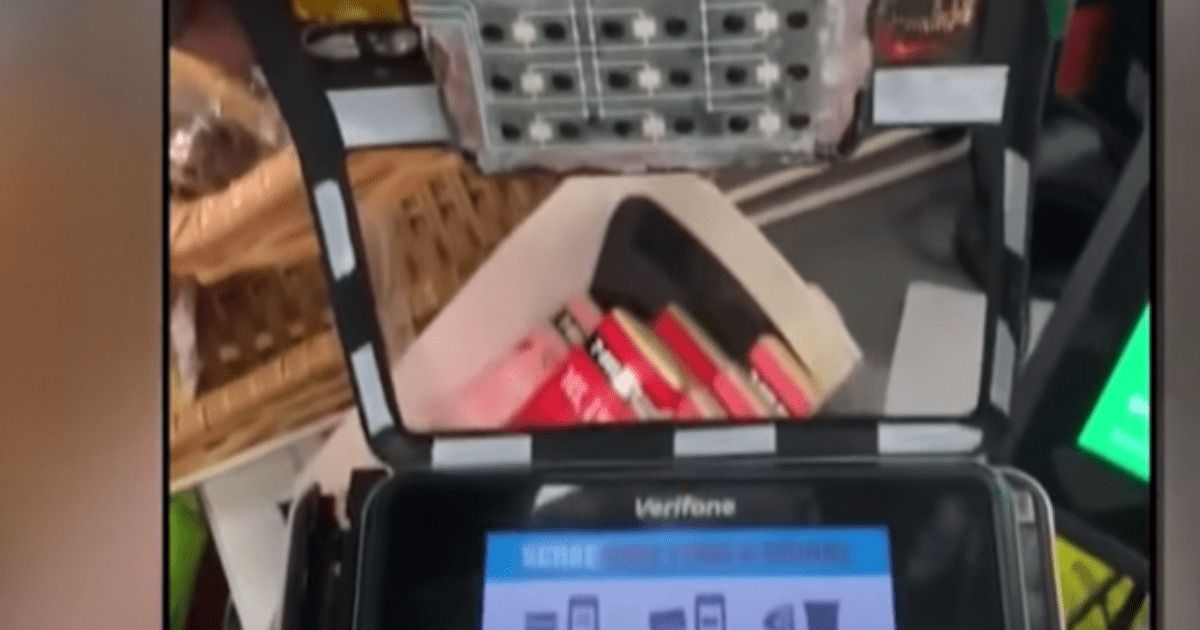With inflation at an all-time high in the United States, you can be sure scams will follow.
With that being said dozens of police reports and videos on the web have shown an increase in card skimmers being placed in convenience stores and at gas pumps.
According to the web, a skimmer is “a device installed on card readers that collects card numbers”.
Thieves will usually place these skimmers at convenience stores or gas pumps in an attempt to gather credit/debit card data to later make purchases with the cards.
Here’s what they look like:
Skimming device found on top of credit-card reader at a @7eleven after workers noticed the machine wasn’t working correctly, per @HaywardPD, not specifying which store or location pic.twitter.com/27C6jrq8WZ
— Henry K. Lee (@henrykleeKTVU) August 26, 2021
Trust no-one & nothing! #CyberSecurityAwareness #infosec #crime @OSPolicing pic.twitter.com/rQLe6oOwr4
— 🇺🇦Evan Kirstel #B2B #TechFluencer (@EvanKirstel) July 5, 2022
It’s happening all over the United States:
They've found ANOTHER skimming device but this time it's in Mckinney, TX at the 7/11… 😭 These ppl getting rich off us.. Yall keep pulling on these shxts n plz send us footage if you have can 💯✔️ pic.twitter.com/5lFR2Sqlrg
— NoPauseTv (@NoPauseTv) March 25, 2022
WMUR had these details to share about a 7/11 having a card skimmer:
Manchester police are warning about a skimming device found on a register at the 7-11 store at Beech and Valley streets. The card-skimming device was on a register inside the store on 242 Beech street, according to police.
Police said employees found it after a customer complained about the buttons.
Anyone who may have purchased anything at the store should monitor their bank account.
This was not the first skimmer found in the Manchester area recently. Just last week, police said a skimmer was found on a Walmart register.
It’s not just happening in the United States but in the UK too:
'Replicating (A)t (T)he (M)oment'
A rigged device attached to the card reader of #ATM can replicate yr. card details & siphon off money.
Beware of #skimming devices rigged in the card reader.
Dial 1930 in case of a financial fraud & report it to the bank.#CyberSafety pic.twitter.com/iqAAnCnjvy
— UP POLICE (@Uppolice) April 9, 2022
The United Credit Union shared these tips on how to be vigilant regarding card skimmers:
Do a quick scan. Before using any machine, take a look to make sure it hasn’t been tampered with. If the card reader seems loose, crooked, or damaged, if the graphics aren’t aligned, or if part of the machine is a different color, don’t insert or swipe your card. If there is another machine nearby (such as two ATM machines next to each other) compare them to see if there are obvious differences. For example, if one machine has a flashing slot to insert your card and the other doesn’t, that may be an indication that there is something wrong.
Be wary of non-bank ATMs. FICO reports that 60% of skimming occurs at privately-owned ATMs. These are typically cash-dispensing machines and tend to be located in convenience stores, bars, restaurants, grocery stores, or check cashing establishments.
Check the keypad. If the numbers are hard to press or feel thick, it might have a false keypad installed and you should move on to the next machine.
Block your PIN. When entering your PIN, cover the keypad with your other hand in case a camera is recording your number.
Use mobile wallet. An alternative to swiping your card is paying by mobile wallet including Apple Pay, Samsung Pay, or Google Pay. This form of payment is secure because your credit card information is tokenized and rendered useless if a thief where to get a hold of it.
Pay inside. If your local gas station hasn’t yet updated their pumps to accept mobile wallet or your aren’t sure if the machine is safe to use, go inside the service station to pay. Taking an extra minute to walk inside could save you a whole load of problems later on.
Stay in public view. Always try to use machines that are in public view with security monitoring – these machines are less likely to be tampered with. For additional protection, use a machine inside the store or an ATM inside your bank.
Check your account regularly. Technology is advancing and so are skimming devices so the best thing you can do is monitor your account. Rather than wait for your monthly statement, check your account regularly using online and mobile banking. This way, if anything were to happen, you can catch it immediately and report it to the bank or local credit union where your accounts are.
Sign up for alerts. See what type of fraud alert system your card provider has in place and take advantage of it. While fraud is not 100% preventable, catching issues immediately will save you a lot of headaches. At 1st United, you have access to text alerts that can help prevent fraudulent transactions on your credit and debit cards. If a suspicious transaction occurs, 1st United will send a text to your mobile phone asking you to verify if you performed the transaction.
Above all, trust your instincts. If you suspect foul play, or if you’re in doubt about the authenticity of a machine, use a different machine or payment method.



Join the conversation!
Please share your thoughts about this article below. We value your opinions, and would love to see you add to the discussion!